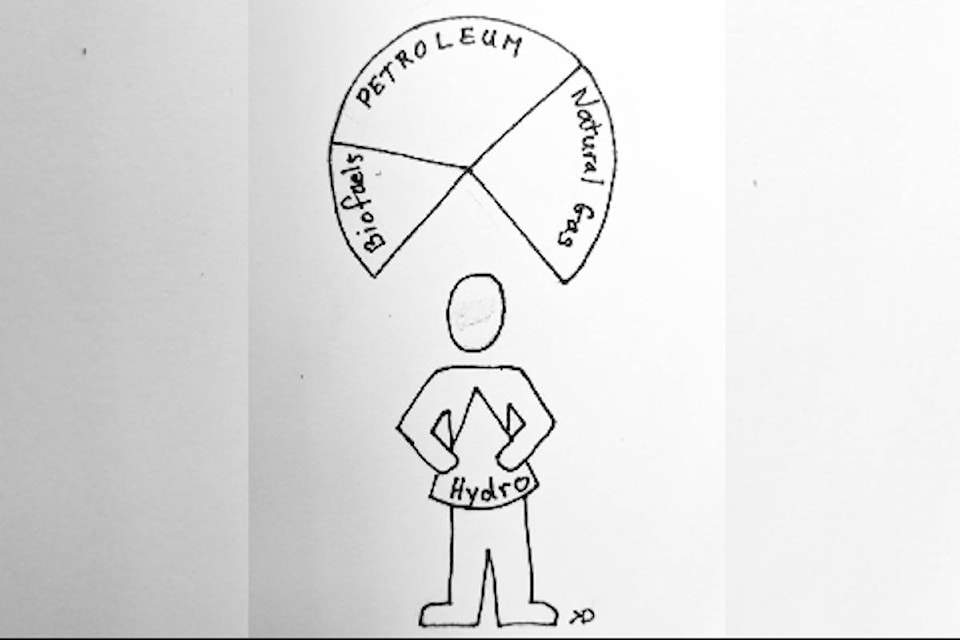B.C. often feels a bit smug about energy use in regards to climate change. After all, most of our electricity comes from carbon-free hydro dams. The trouble with that attitude is that electricity is actually a small fraction of BC’s total energy use.
Electricity is actually a small fraction of BC’s total energy use
We tend to focus on personal energy choices: heating our houses, driving our cars. Personal use (residential and personal transport on the chart) has a role, but it is a small one. The energy used in freight transport — think tractor-trailers with logs, toilet paper or cars — is larger than personal transport. The energy used by industry is twice that of freight transport.
READ MORE: Inquiry into wood-to-fuel plant feasibility requested
While the energy that goes into freight and industrial production aren’t at the front of our minds when we buy an appliance or build a house, we can’t do without them. Let’s look at them separately:
Freight: Electric passenger vehicles have become practical due to two developments: reduction of the weight of vehicles (true for all passenger vehicles not just EV) and increased battery capacity. Freight trucks present a significant challenge: there’s no practical way to reduce their load, and they expect to haul loads non-stop across North America. There are several companies working on electric semi trucks (including Volvo, Daimler and Tesla) but development is way behind electric cars.
READ MORE: FortisBC partners to fund smart energy research chair at UBC Okanagan
Industrial production: Industry’s energy use is more problematic. Many chemical and metal-working plants require extreme heat, which are easily provided by carbon-intensive fuels. Medium heat can be generated with electricity (which in turn can come from wind, solar or hydro). Heat above 120 C is tricky: Rather than the inexpensive solar panels used to generate residential electricity, it could be supplied by concentrated solar. It can’t use geoexchange, but could use deep geothermal, tapping the earth’s core. The best options may come from biofuels made of wood waste, which can be carbon neutral with responsible forest stewardship.
We have to take responsibility for carbon beyond our homes and cars
Looking at the Sankey diagram, you can see why BC is intently focused on moving personal transport to electric vehicles. It’s the only category where there is a clearly developed pathway to reduce carbon. But it’s not the largest generator of carbon in BC and we have to take responsibility for carbon beyond our homes and cars.
The Sankey chart above is inspired by CESAR (Canada Energy Systems Analysis Research) at the University of Calgary.
I apologize for any inaccuracies I have introduced while trying to simplify the data. You can find the complete chart here. The full chart is fascinating: it shows energy losses across the system, Canada’s imports and exports, and has a carbon version, where it’s clear that petroleum, coal and natural gas are having a large impact on the Canadian carbon footprint.
Missed last week’s column?
Dyer: DIY energy audit with solar bonus material
About Kristy Dyer:
Kristy Dyer has a background in art and physics and consulted for Silicon Valley clean energy firms before moving (happily!) to sunny Penticton. Comments to Kristy.Dyer+BP@gmail.com
